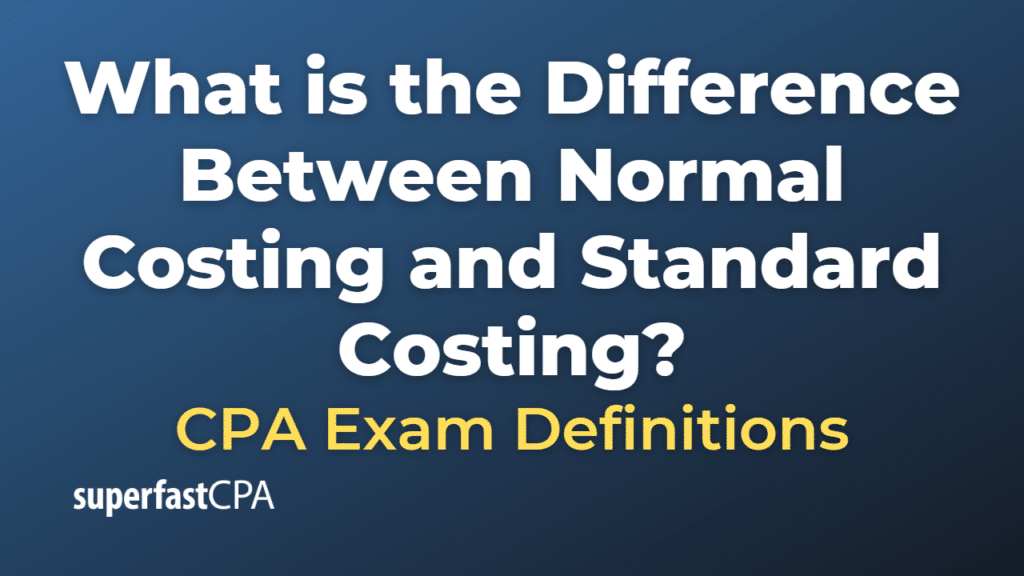Difference Between Normal Costing and Standard Costing
Normal costing and standard costing are two methods used in cost accounting to value the cost of products. Both methods estimate the cost of direct materials, direct labor, and overhead. However, they differ in how they deal with actual and estimated costs:
- normal costing: In normal costing, actual costs are used for direct materials and direct labor, while overhead is applied using a predetermined overhead rate. This rate is typically based on estimated overhead costs and an estimated allocation base (like direct labor hours or machine hours) for the upcoming year. The use of actual costs for materials and labor provides a more accurate cost for these inputs, but using a predetermined overhead rate can sometimes lead to over- or under-applied overhead.
- standard costing: In standard costing, the costs of direct materials, direct labor, and overhead are all estimated in advance (standard costs), and these estimates are used to assign costs to products. At the end of the accounting period, any differences between actual costs and standard costs (variances) are analyzed. Standard costing can simplify the cost assignment process and facilitate budgeting and cost control, but it can also mask deviations from actual costs if variances are not regularly analyzed and addressed.
In summary, the difference between normal costing and standard costing lies in their use of actual versus estimated costs. Normal costing uses actual costs for direct materials and direct labor but estimated costs for overhead, while standard costing uses estimated costs for all three components.
Example of the Difference Between Normal Costing and Standard Costing
Let’s consider a fictional manufacturing company that produces a single type of product. We’ll examine one unit of product under both normal costing and standard costing.
Assume the following:
- Direct material actual cost: $20
- Direct labor actual cost: $30
- Overhead actual cost: $40
- Direct material standard cost: $18
- Direct labor standard cost: $28
- Overhead standard cost: $38
Also, assume that the predetermined overhead rate is calculated based on machine hours, and the rate is $35 per machine hour.
Normal Costing:
Under normal costing, the actual costs of direct materials and direct labor and the applied overhead cost are used. If it took one machine hour to produce the product, the cost under normal costing would be:
- Direct material actual cost: $20
- Direct labor actual cost: $30
- Overhead applied cost (predetermined overhead rate * actual machine hours): $35 * 1 = $35
So, the cost of the product under normal costing would be $20 (materials) + $30 (labor) + $35 (overhead) = $85.
Standard Costing:
Under standard costing, the standard costs are used to calculate the cost of the product:
- Direct material standard cost: $18
- Direct labor standard cost: $28
- Overhead standard cost: $38
So, the cost of the product under standard costing would be $18 (materials) + $28 (labor) + $38 (overhead) = $84.
At the end of the period, the company would calculate variances between the standard costs and the actual costs to see if the product cost more or less to produce than was initially expected.
This example illustrates the difference between normal costing and standard costing. Under normal costing, actual costs for direct materials and labor are used along with applied overhead, while under standard costing, all costs are estimated in advance. The choice between normal costing and standard costing can depend on the specific needs and capabilities of the company.













